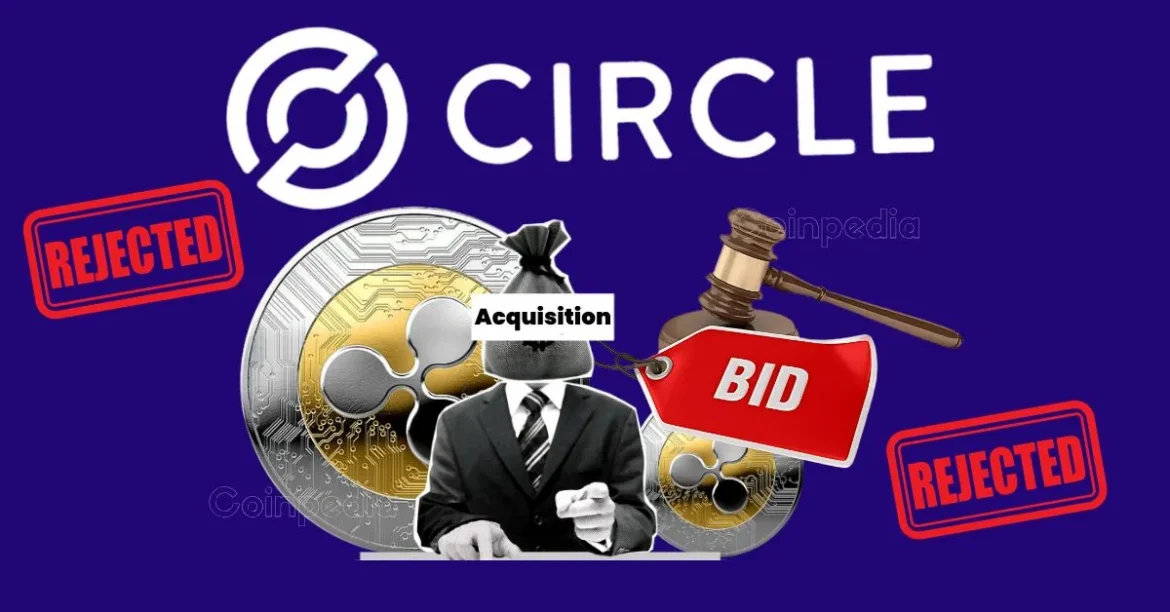The Escalating Bidding War: Ripple’s Bold Move to Acquire Circle
In recent weeks, the cryptocurrency sector has been abuzz with news of a high-stakes acquisition battle between Ripple and Coinbase over Circle Internet Financial, the issuer of the prominent USDC stablecoin. Ripple, initially offering $4-5 billion, has now reportedly doubled its bid to a staggering $11 billion, signaling an aggressive strategy to consolidate its position in the stablecoin market. Meanwhile, Coinbase, long viewed as a natural partner and suitor for Circle due to their shared ecosystem, is not sitting idly by and is joining the competition, intensifying the race to secure control of the stablecoin giant.
Understanding the Stakes: Why Circle Matters
Circle is a pivotal player in the stablecoin arena as the issuer of USDC, one of the largest stablecoins by market capitalization. Stablecoins like USDC provide essential liquidity and stability in the otherwise highly volatile crypto markets, acting as anchor points for trading, DeFi applications, and corporate treasury operations.
For Ripple, acquiring Circle represents an opportunity to integrate USDC into its expanding suite of blockchain-based financial services and payments solutions. A successful acquisition would not only broaden Ripple’s portfolio beyond its flagship XRP token but also potentially challenge market dominance by other stablecoins like Tether’s USDT. Similarly, Coinbase sees the acquisition of Circle as a strategic pathway to deepen its market offerings, enabling it to “own the pipes” through which digital assets flow, thereby reinforcing its role as a central, trusted hub for crypto transactions.
The Bidding Saga: From $5 Billion to $11 Billion and Beyond
Initial reports indicated that Ripple’s bid of $4 to $5 billion to Circle was declined, with Circle’s leadership perceiving the offer as undervalued. Circle is understood to be targeting an IPO valuation of no less than $5 billion, if not more, underscoring the company’s desire for a premium sale price or a public listing that maximizes shareholder value.
In reaction, Ripple dramatically increased its offer, now reportedly proposing $11 billion in a combination of cash and XRP tokens. This hefty figure represents more than double the original bid and is intended to outpace Coinbase’s competing interest. However, sources suggest that this too was met with skepticism by Circle, as the company continues to focus on IPO plans which, if successful, could value the company even higher.
The bidding war is illustrative of the broader contest to dominate stablecoin issuance and payment infrastructure—a market segment poised for robust growth amid ongoing crypto adoption and regulatory clarity.
Coinbase’s Position and Strategy
Coinbase’s interest in acquiring Circle is grounded in a long-standing relationship through USDC and integration within its platform. As one of the largest U.S.-based crypto exchanges, Coinbase aims to expand its stablecoin capacity, ensuring control over this vital asset class to enhance customer offerings and operational resilience.
While Ripple’s latest bid signals aggressive pursuit, Coinbase has been reported to step up its own engagement with Circle, seeking to counter Ripple’s advances. This competition highlights the market’s recognition of Circle’s intrinsic value and the strategic leverage owning USDC could provide.
Ripple’s Broader Vision: Beyond the Acquisition
Ripple’s acquisition ambitions go beyond simply purchasing Circle. The company is actively enhancing its ecosystem through previous acquisitions, such as Hidden Road, and by deepening its integration into traditional finance sectors. Bringing Circle under Ripple’s umbrella would bolster its stablecoin dominance, accelerate DeFi adoption of USDC across the XRP Ledger, and potentially drive synergy between XRP and USDC use cases.
Moreover, Ripple’s offer involving XRP tokens reflects its confidence in its native cryptocurrency and its future market potential. This bid also underscores the growing trend of crypto-driven M&A deals blending traditional capital with digital assets.
Market and Regulatory Implications
The ongoing bidding battle sends clear signals to markets and regulators alike. Circle’s IPO ambitions indicate optimism about regulatory clarity and growing institutional appetite for regulated crypto assets. Conversely, the acquisition talks reveal that industry giants are preparing for a market where owning stablecoin issuance is as critical as exchange operations themselves.
Should Ripple or Coinbase succeed, the stablecoin landscape could consolidate, sharpening competition but also increasing regulatory scrutiny, given the central role stablecoins now play in digital finance.
Conclusion: A Defining Moment in Crypto Industry Evolution
The escalating contest between Ripple and Coinbase for Circle is more than a high-value deal; it is a pivotal moment defining the future architecture of the stablecoin market and, more broadly, crypto finance. Ripple’s bold $11 billion bid highlights its aggressive bid to deepen its ecosystem and challenge existing market power, while Coinbase’s involvement underscores the strategic necessity of controlling stablecoin issuance for exchanges.
Ultimately, Circle’s decision to favor an IPO or entertain acquisition bids will shape market dynamics for years ahead. This race also reflects the maturation of crypto firms shifting from purely trading platforms to comprehensive financial service providers. Whichever company wins, the repercussions on crypto market structure, stablecoin adoption, and regulatory positioning will be significant—marking a new chapter in the evolution of the blockchain economy.





